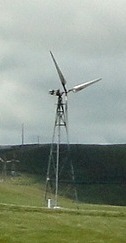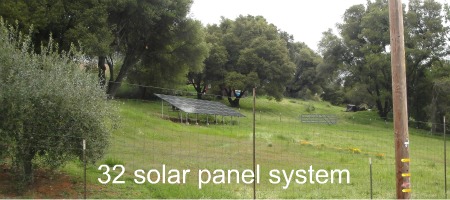Here is an example equation of what you could expect in electricity production each month of the year from a 4 KW PV solar system in Rochester, NY.
Please assume that there are no problems with shade hitting the solar panels, and that the system is angled ideally towards the sunlight.
The numbers below explain the monthly kwh production, the dollar value of the electricity the system would produce, and a few other solar facts.
| Solar PV System in Rochester, NY | |
| City: | Rochester |
| State: | New_York |
| Latitude: | 43.12° N |
| Longitude: | 77.67° W |
| Elevation: | 169 m |
| PV System Specifications | |
| DC Rating: | 4.0 kW |
| DC to AC Derate Factor: | 0.770 |
| AC Rating: | 3.1 kW |
| Array Type: | Fixed Tilt |
| Array Tilt: | 43.1° |
| Array Azimuth: | 180.0° |
| Energy Specifications | |
| Cost of Electricity: | 14.5 ¢/kWh |
Energy and Dollar Value Output Details from PV Solar in Rochester:
| Results | |||
| Month | Solar Radiation (kWh/m 2/day) |
AC Energy (kWh) |
Energy Value ($) |
| 1 | 2.40 | 236 | 34.22 |
| 2 | 3.55 | 320 | 46.40 |
| 3 | 4.13 | 400 | 58.00 |
| 4 | 4.88 | 433 | 62.79 |
| 5 | 5.20 | 457 | 66.27 |
| 6 | 5.67 | 470 | 68.15 |
| 7 | 5.52 | 470 | 68.15 |
| 8 | 5.26 | 449 | 65.11 |
| 9 | 4.90 | 418 | 60.61 |
| 10 | 3.49 | 314 | 45.53 |
| 11 | 2.25 | 201 | 29.14 |
| 12 | 1.93 | 183 | 26.54 |
| Year | 4.10 | 4351 | $630.89 |
These numbers as you can see are not considerable, you won’t be saving tens of thousands of dollars right away, but if you factor in a bit of a larger system, or the very good possibility that your actual electric bill is much higher in cost per kwh, then this system might make sense to you. Some of the difficult factors in this particular location for solar energy is the relatively low amount of daylight hours on average. The equation would be entirely different if there were lets say 5.5 sunlight hours per day. That way the solar panels could operate and produce electricity in Rochester, NY for about 20% more time each day. If though, the state and federal tax credits are something that you could take advantage of, you might want to talk with one of your local installers to see if they can come up with some creative solar panel financing options for you.







